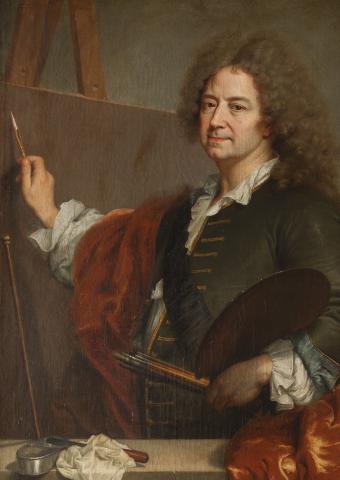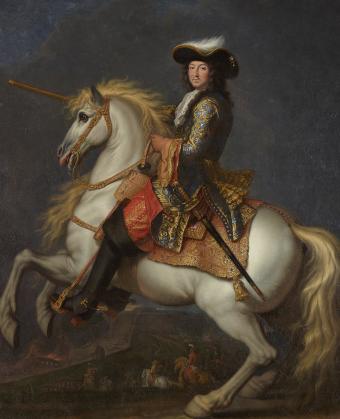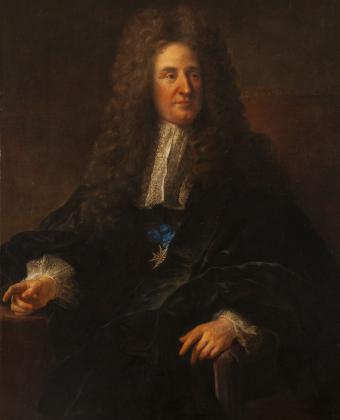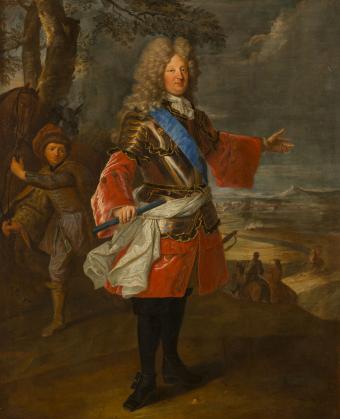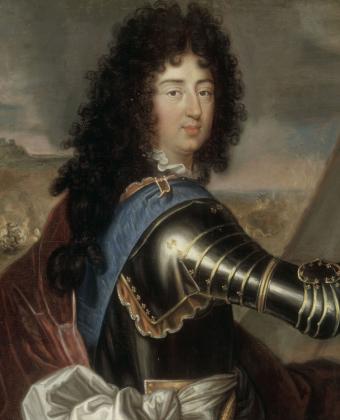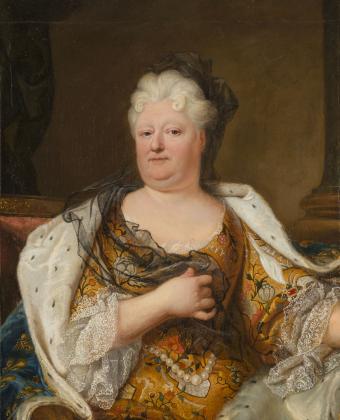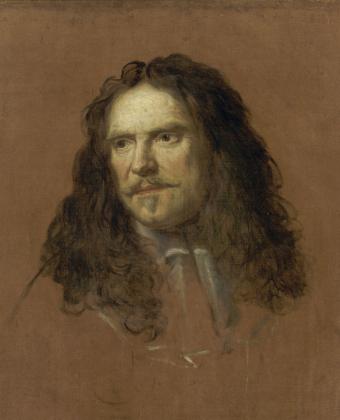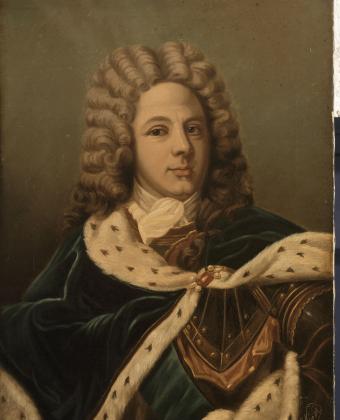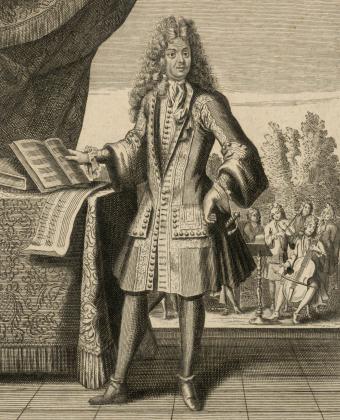Born in Perpignan, Rigaud arrived in Paris in 1681. Upon the advice of Le Brun he dedicated himself to portrait painting, which was a genre that he took to the highest level of expression. He caught the attention of the king and the Court with his depiction of Monsieur, the king’s brother, in 1688, followed by the one of Philippe II, Duke of Orléans the following year. Louis XIV commissioned his portrait in armour from him, which was delivered in 1694. However, it was the portrait in coronation attire, dated 1701, which really established the painter’s reputation. His work definitively served as a model for all ceremonial portraits, which were veritable emblems of the French monarchy, with columns and landscape in the background, shimmering drapes, a solemn pose and intense colours. French and European sovereigns continued to commission portraits up until the 19th century. Rigaud painted Louis XV again in 1730.
The artist’s fame reached its peak at this time. He produced nearly 400 paintings and by the end of his career was Director of the Royal Academy of Painting. Besides the Court, he also painted the high society of the time, including the middle-classes, financiers and aristocrats. His fame spread across Europe and he created portraits of King Philip V of Spain (Versailles), King Augustus III of Poland (Dresden) and others.
Overwhelmed with requests, he was forced to entrust certain parts to his collaborators. For example, it was Joseph Parrocel who painted the battle in the background of his portrait of the Duke of Burgundy (Versailles). Certain works reached the height of pomposity, such as the portrait of the Marquess of Dangeau (Versailles).
The portraitist sometimes adopted a more intimate style, as seen in the remarkable double portrait of his mother Marie Serre (Louvre). His studies of hands and drapes are just as incredible, demonstrating the artist’s refined style and attention to detail. His liking for double portraits can also be seen in the almost provocative confrontation of Le Brun and Mignard, two great rivals, depicted in the same painting (Louvre).
Rigaud also demonstrated his talent in several religious paintings. Influenced by van Dyck and Champaigne, Rigaud played a key role in French and European portrait art.

